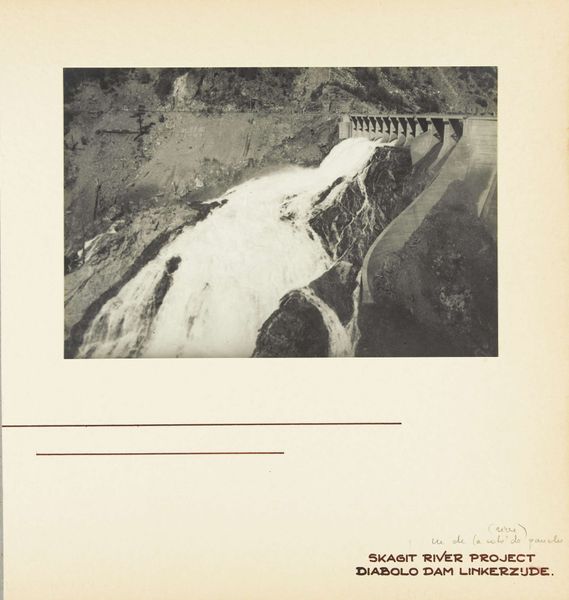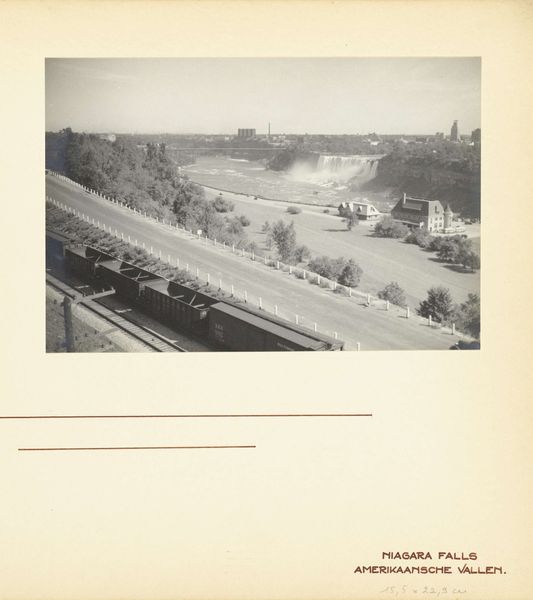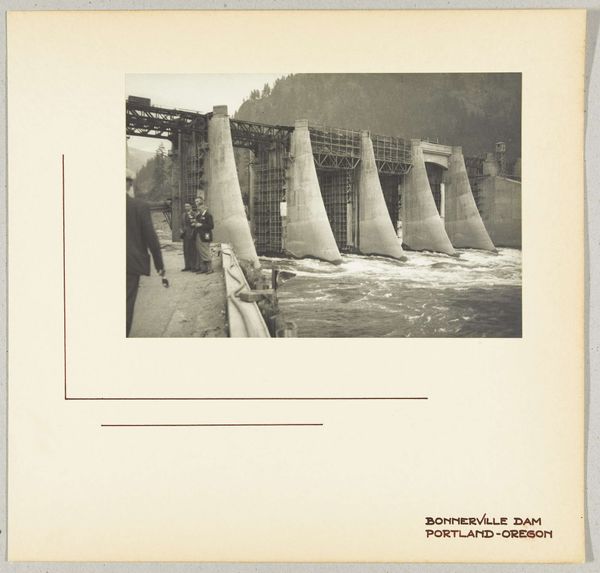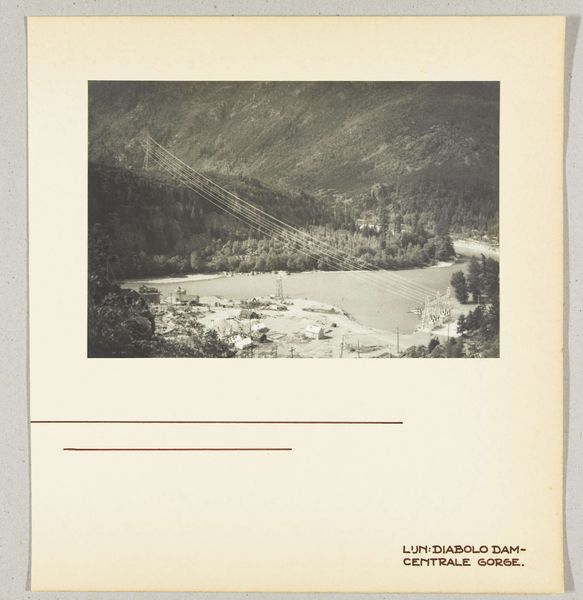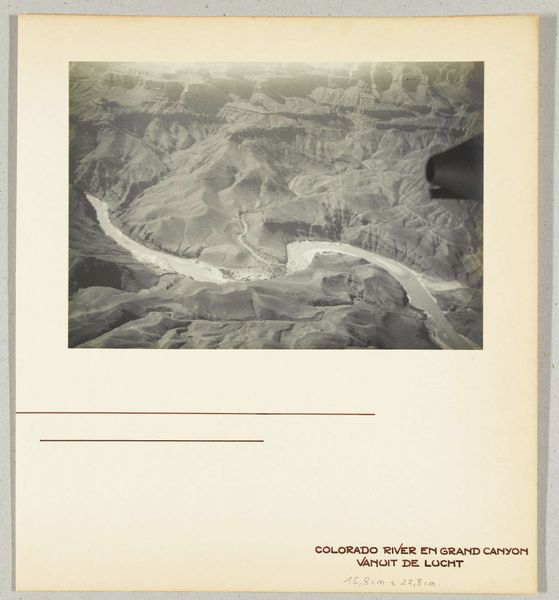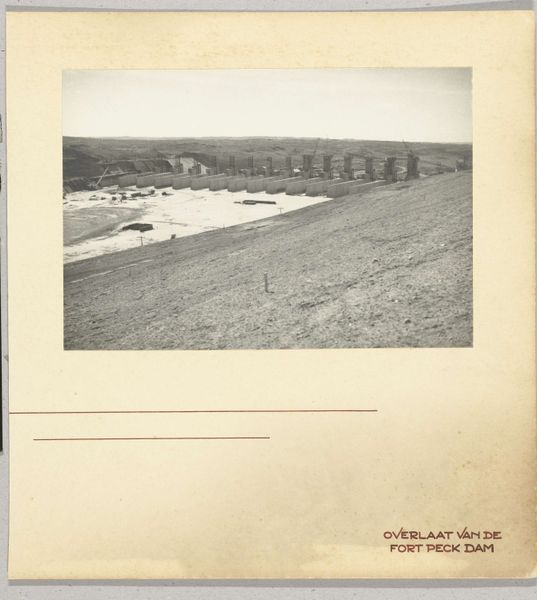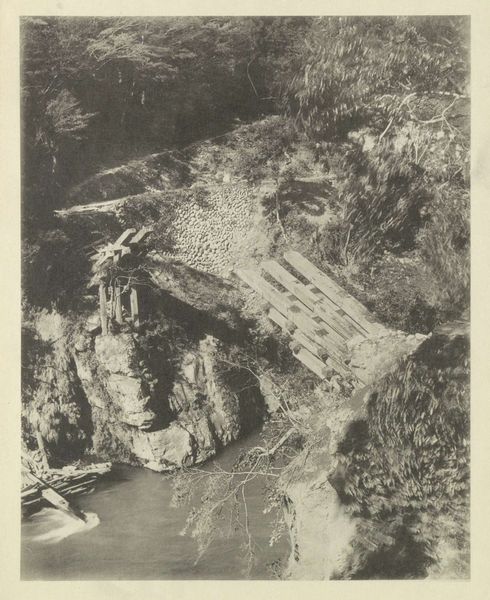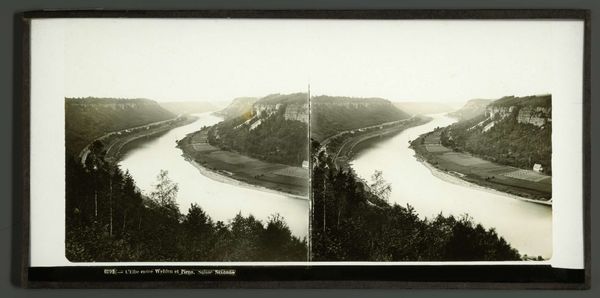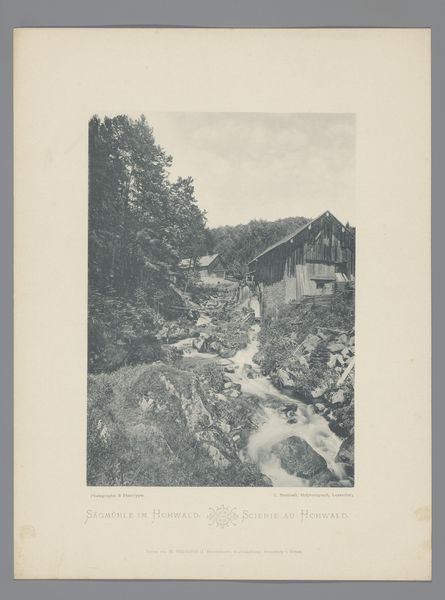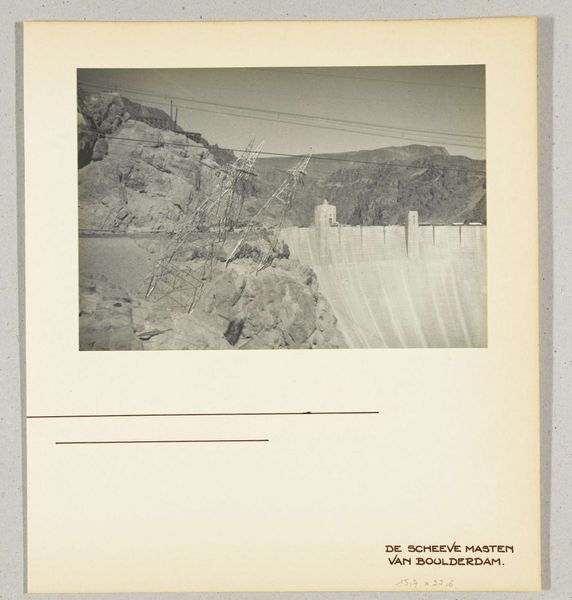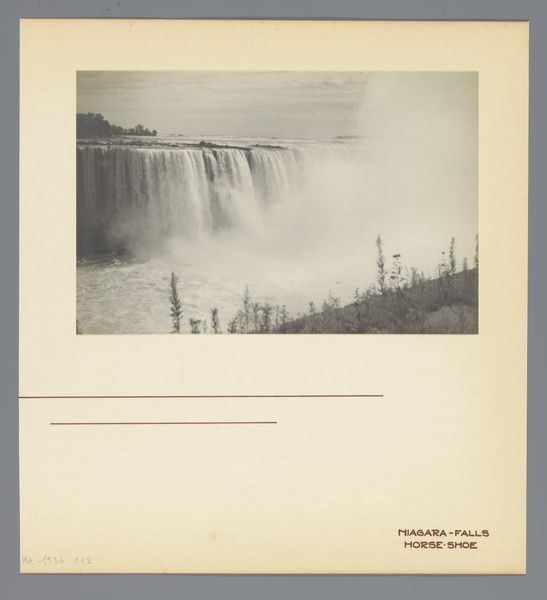
photography
#
landscape
#
photography
#
photojournalism
Dimensions: height 152 mm, width 226 mm, height 315 mm, width 285 mm
Copyright: Rijks Museum: Open Domain
Editor: So this photograph, “Niagara Falls, Verenigde Staten/Canada,” was taken by Wouter Cool in 1936. It's a black and white image that captures a specific angle of the falls before it plunges. There is a building, perhaps for utilities, alongside it. It evokes a sense of both awe and… almost of industrial encroachment. What catches your eye when you look at it? Curator: The stark contrast between the raw, untamed power of the Falls and the calculated geometry of the dam infrastructure… it creates a powerful symbolic tension, doesn’t it? This duality speaks volumes about humanity's relationship with nature in the 1930s. The dam and the associated structures whisper a story of control and resource management, very telling of the anxieties of that decade. Look at how the lines of the structure almost seem to want to dominate the scene. What do you think the photographer might be trying to convey? Editor: I wonder if they're pointing out a kind of hubris? That need to contain something so naturally immense? Curator: Precisely. Water has always been symbolic of the unconscious, of fluidity, and life, whilst the man-made architecture imposes an attempt at rationality. Is this progress or oppression? Which force, water or stone, will prevail? Even the photograph's monochrome palette contributes, flattening the scene into something timeless, highlighting underlying structures. And consider its placement amongst "photojournalism". What memory is it trying to preserve? Editor: That's a really interesting way to look at it. I hadn't considered the photograph itself as a symbol in that larger context. Thank you! Curator: My pleasure! Thinking about it this way reminds us that the symbolic meaning isn't something fixed, it evolves and changes over time, in dialogue with our own cultural experiences.
Comments
No comments
Be the first to comment and join the conversation on the ultimate creative platform.

